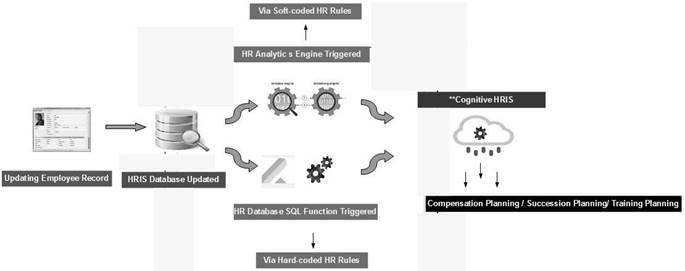
Traditional HRIS systems and HR Analytics – The Synergy
The Human Resource Information System has traditionally been based on the requirement of bookkeeping HR process records.
With the advent of a Relational Database Management System (RDBMS) & database management/programming in the mid-1980s, HRIS systems were gradually upgraded into HR workflow and decision-flow systems. This change meant that HRIS systems evolved from manual, transaction-based bookkeeping to semi-automating HR processes. A good example is the onboarding process, which could now be individually tailored and automatically triggered by the data points obtained in the recruitment process. 20 years ago, this was unthinkable.
Over the last half-decade, there has been an ever-increasing narrative built around people analytics. There have also been suggestions that people analytics and HRIS are contrasting approaches and need to be categorized separately. The fundamental difference between the two is in the reporting and logic flow. Traditional HRIS workflow is based on hard-coded business rules, whereas HR analytics is based on statistical modeling/machine learning applied to HR data.
However, HR analytics can augment a Human Resources Information System by improving the scope and accuracy of HR data analysis and HR decision making.
For example, estimating employee potential through hard-coded rules (like in an HRIS), such as attendance records, sales achieved, or certifications will be limited in terms of accuracy. However, using soft coded rules with HR analytics will enhance the quality of decision making in terms of gauging employee potential. Examples include unsupervised employee clustering, principal component analysis on correlating factors, or Organizaitonal Network Analysis (ONA) or Natural Language Processing (NLP) on social media records.
For that reason, the integration of analytics in the HRIS could transform an information and workflow management system to a cognitive HR decision-making system, enabling semi-automated HR.
To capitalize on this potential, HR analytics must be integrated with HRIS workflows. This can be done by either adding HR analytics as an additional module to the core HRIS system itself or through the seamless integration of third-party products, like Visier. Both need to work in tandem as a unified system, as illustrated in the figure below.

This is the approach that most of the top HRIS vendors are working with today. IBM, SAP, and Oracle are prime examples here.
The question is, how to get there. A good road-map would be organization-specific. Most businesses with a headcount of 50 or more would already have a basic system in place. This could be an macro-enabled HR record system in Excel, or an open-source system like Orange HRMS.
However, at some point, growing organizations will need a robust full-suite HRIS system for several reasons. These include:
· Better record keeping
· Improving quality of HR reporting
· Incorporating all functions of HR process
· Improving overall operational efficiency of HR
· Robust security/authentication of data/users